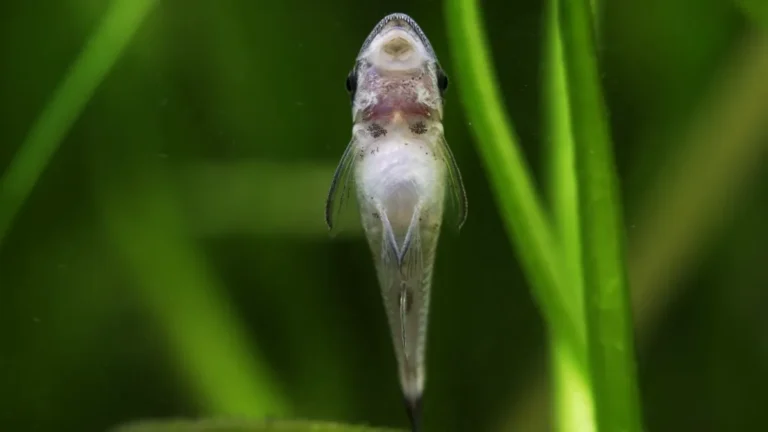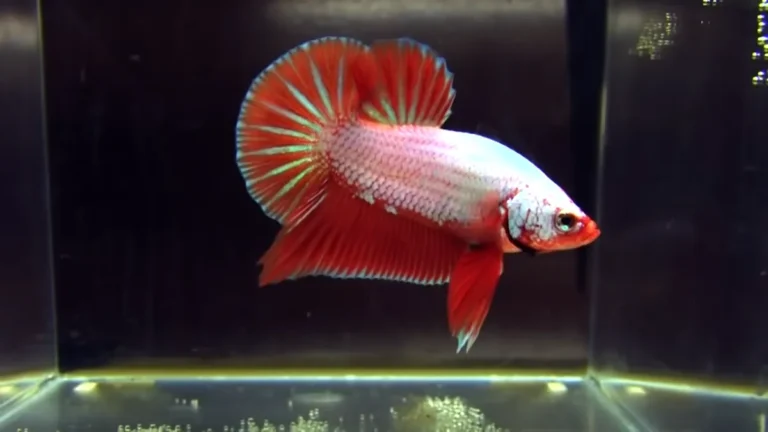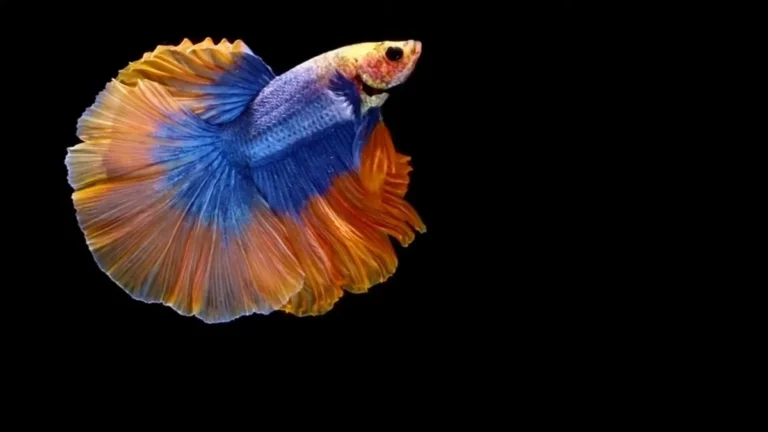Cellophane Betta Care, Breeding, Behavior Health and Diseases
Caring for a Cellophane Betta fish can be a rewarding and enjoyable experience for any fish enthusiast. These fish are known for their translucent scales, which give them a unique and beautiful appearance.
Key Takeaways
- Cellophane Bettas require a tank that is at least 5 gallons in size, with a heater and filter to maintain water quality.
- These fish prefer to live alone or with peaceful tank mates.
- Providing a healthy and comfortable environment is essential to ensuring the longevity and well-being of Cellophane Bettas.
From their distinctive translucent beauty to the nuances of their breeding habits, behavioral traits, and safeguarding against diseases, we will cover it all. Join us on a journey through the fascinating realm of Cellophane Betta fish, and equip yourself with the knowledge and skills to ensure their longevity, happiness, and vibrant health.
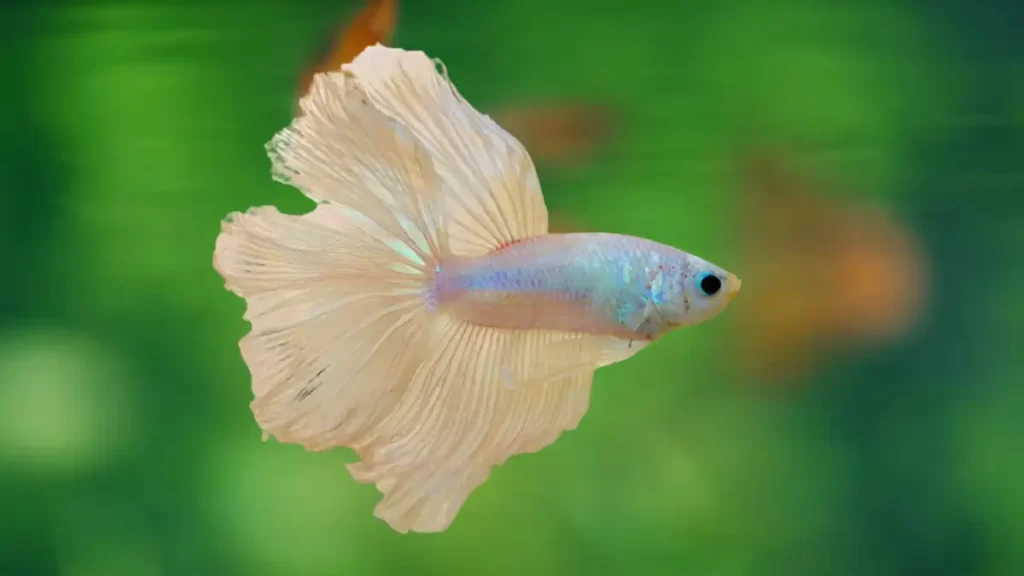
Cellophane Betta Summary
Cellophane bettas, also known as clear bettas, are a unique type of Siamese fighting fish that are mostly white and pink, with an iridescence that can be green, royal blue, or steel blue in color. They are named after their transparent appearance, which makes them stand out from other betta varieties.
These fish are relatively small, with an average length of 2.5 inches (6.35 cm) and a lifespan of 2-3 years. They are relatively easy to care for, making them an ideal choice for beginner aquarists.
Cellophane bettas are known for their gentle temperament, which makes them a popular choice for community tanks. However, they can become aggressive towards other bettas, so it is best to keep them in a separate tank or with non-aggressive tankmates.
In terms of breeding, cellophane bettas are relatively easy to breed, but it is important to ensure that the water conditions are optimal and that the breeding pair is healthy. They can produce a range of colors, including opaque, metallic, and iridescent varieties.
Appearance
Cellophane bettas are known for their striking translucent appearance. Their scales are transparent, which makes them look like they are wrapped in cellophane. This unique trait makes them stand out from other betta fish and has won the hearts of many fish enthusiasts.
In terms of size, cellophane bettas are similar to other bettas. They have long, flowing fins that add to their overall beauty.
However, their coloration is not as vibrant as other bettas. This is because their scales are transparent, which makes their color appear muted. Despite this, their unique appearance more than makes up for their lack of bright colors.
When it comes to gender, male cellophane bettas are more colorful than females. They have more vibrant fins and a more pronounced body shape. Females, on the other hand, have smaller fins and a rounder body shape.
Lifespan
Cellophane bettas have an average lifespan of 2-4 years in captivity. However, with proper care and attention, they can live up to 5 years. The lifespan of a betta fish depends on various factors such as genetics, diet, water quality, and tank conditions.
One of the most important factors in determining the lifespan of a cellophane betta is the age at which it is purchased. Betta fish that are purchased at a younger age tend to live longer than those that are purchased when they are already mature. It is important to purchase a cellophane betta from a reputable breeder who has taken good care of the fish from a young age.
Diet is another important factor that affects the lifespan of a cellophane betta. A balanced diet that includes high-quality pellets, live or frozen food, and occasional treats like bloodworms or brine shrimp can help keep the fish healthy and extend its lifespan.
Water quality is also crucial for the longevity of a cellophane betta. The water should be clean and free from harmful chemicals, ammonia, and nitrites. A good filtration system and regular water changes can help maintain optimal water quality.
Lastly, tank conditions play a significant role in the lifespan of a cellophane betta. A tank that is too small or overcrowded can cause stress and lead to health issues. A tank of at least 5 gallons with plenty of hiding spots and plants can provide a comfortable environment for the fish to thrive.
Cellophane Betta Care
Cellophane bettas are a unique and beautiful type of betta fish that require specific care to thrive. In this section, we will cover the essential aspects of cellophane betta care, including tank size, water parameters, ideal living conditions, and food and diet.
Tank Size
Cellophane bettas require a minimum tank size of 5 gallons. However, a 10-gallon tank is recommended to provide ample swimming space and to accommodate any tankmates. It is important to note that bettas are solitary fish and should not be kept with other bettas, as they are highly territorial.
Water Parameters
Maintaining proper water parameters is essential for the health and well-being of cellophane bettas. The ideal water temperature for bettas is between 76-82°F. The pH level should be between 6.5-7.5, and the water hardness should be between 3-10 dGH. It is important to perform regular water changes to keep the water clean and free of harmful toxins.
Ideal Living Conditions for Cellophane Betta Fish
Cellophane bettas prefer a heavily planted aquarium with plenty of hiding spots and areas to explore. They also require access to a filter and heater to maintain proper water conditions. It is important to avoid exposing bettas to direct sunlight, as it can cause fluctuations in water temperature and promote algae growth.
Food & Diet
Cellophane bettas are omnivores and require a balanced diet of both protein and vegetables. High-quality betta pellets should make up the bulk of their diet, supplemented with frozen or live foods such as brine shrimp, bloodworms, and daphnia. It is important to avoid overfeeding, as bettas are prone to obesity and other health issues.

Health and Diseases
Cellophane bettas are generally hardy fish, but they are still susceptible to diseases if not properly cared for. Here are some common health issues that cellophane bettas may experience and how to prevent them:
- Ich: Also known as white spot disease, ich is a parasitic infection that causes white spots on the fish’s body and fins. It can be prevented by maintaining good water quality and avoiding sudden changes in temperature or pH levels. If your betta does get ich, treat it with an over-the-counter medication.
- Fin Rot: Fin rot is a bacterial infection that causes the fins to deteriorate and become ragged. It can be prevented by keeping the tank clean and avoiding overfeeding. If your betta does get fin rot, treat it with an antibiotic medication.
- Velvet: Velvet is a parasitic infection that causes a golden or rusty dust-like appearance on the fish’s body and fins. It can be prevented by maintaining good water quality and avoiding overcrowding. If your betta does get velvet, treat it with an over-the-counter medication.
- Dropsy: Dropsy is a symptom of organ failure that causes the fish’s body to swell and its scales to stick out. It can be caused by poor water quality or a bacterial infection. If your betta has dropsy, it may be too late to save it, but you can try treating it with an antibiotic medication.
To prevent diseases, it’s important to maintain good water quality by doing regular water changes and keeping the tank clean. Overfeeding can also lead to health problems, so make sure to only feed your betta small amounts of food at a time. If you notice any signs of illness, such as lethargy, loss of appetite, or unusual behavior, take action immediately to prevent the disease from spreading.
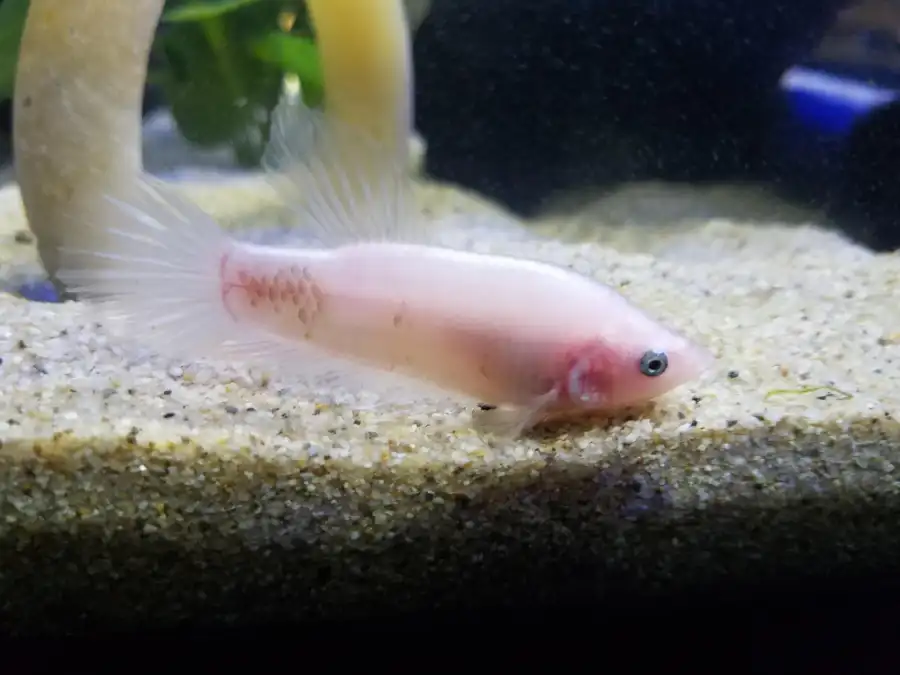
Breeding Cellophane Betta Fish
Breeding Cellophane Betta Fish can be a rewarding experience for fish enthusiasts. However, it is important to note that breeding bettas requires a lot of time, patience, and effort. Here are some tips to help you successfully breed Cellophane Betta Fish:
- Choose healthy and compatible breeding pairs: Before breeding, ensure that the male and female betta fish are healthy, free from any diseases, and have compatible temperaments. It is also important to note that not all mating pairs will produce cellophane offspring. According to a Betta Fish Forum post, breeding two cellophane bettas may not always result in cellophane offspring.
- Provide a suitable breeding environment: Bettas are bubble nest builders, and the male betta will create a bubble nest for the eggs to hatch. Provide a breeding tank that is at least 5 gallons in size, with a temperature range of 78-80°F and a pH range of 6.5-7.5. Include live plants or a spawning mop in the tank to provide hiding places for the female betta.
- Condition the breeding pair: Before breeding, condition the male and female betta fish with a high-protein diet, such as live or frozen brine shrimp or bloodworms. This will help prepare the fish for breeding and increase the chances of a successful mating.
- Introduce the breeding pair: Introduce the male and female betta fish into the breeding tank together. Observe their behavior closely, as the male may become aggressive towards the female. If this happens, remove the female immediately.
- Monitor the breeding process: Once the male and female betta fish have mated, the male will create a bubble nest for the eggs to hatch. The female should be removed from the breeding tank immediately after mating to prevent her from eating the eggs or attacking the male. The eggs will hatch in 24-48 hours, and the fry will become free-swimming after 2-3 days.
Breeding Cellophane Betta Fish can be a challenging but rewarding experience for fish enthusiasts. By following these tips, you can increase your chances of successfully breeding healthy and beautiful Cellophane Betta Fish.

Behavior & Temperament
Cellophane bettas are known for their peaceful temperament and are generally easy to care for. They are a popular choice among beginners and experienced fish keepers alike. These fish are known for their vibrant colors and long, flowing fins, which make them a beautiful addition to any aquarium.
Unlike some other types of bettas, cellophane bettas are not aggressive towards other fish. It is important to note that they are still territorial and may become aggressive towards other bettas. It is best to keep them in a tank by themselves or with peaceful fish that are not likely to bother them.

Cellophane bettas are also known for their curious and playful nature. They enjoy exploring their environment and may even play with toys. Providing them with hiding spots and decorations to swim around will help keep them entertained and happy.
It is important to note that cellophane bettas are sensitive to changes in their environment. Sudden changes in water temperature or quality can stress them out and even lead to illness. It is important to maintain a stable environment for them and to monitor their behavior closely for any signs of stress or illness.
Related Post: The Ultimate Bumblebee Betta Care Guide: Food, Tank Size, Compatibility
Conclusion
Congratulations! You’ve now become well-versed in the art of caring for cellophane bettas. Remember, these captivating creatures rely on us to provide them with a healthy and vibrant environment.
By following the guidelines discussed in this guide, you can ensure that your cellophane bettas thrive for years to come. Apply the knowledge you’ve gained, and don’t hesitate to seek further information or assistance if needed. Happy fishkeeping!
Related Posts:

